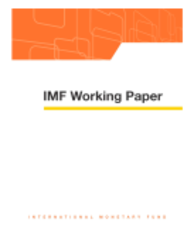
Determinants of the Choice of Exchange Rate Regimes in Six Central American Countries : An Empirical Analysis
This paper examines whether decisions about the appropriate exchange rate regime in six Central American countries were based on longer-run economic fundamentals or on the confluence of historical and political circumstances. To uncover any actual relationship both across countries and across time, we estimate several probit and multinomial logit models of exchange rate regime choice with data spanning the period 1974-2001. We find that theoretical long-run determinants, such as trade openness, export share with the major trading partner, economic size, and per capita income, are adequate, but not robust, predictors of exchange rate regime choice. However, we were not able to establish a statistically significant association between the terms of trade fluctuations or capital account openness and a particular regime in any specification using our sample.
Publication date: March 2003
ISBN: 9781451847963
$15.00
Add to Cart by clicking price of the language and format you'd like to purchase
Available Languages and Formats
| English |
Prices in red indicate formats that are not yet available but are forthcoming.
Topics covered in this book
This title contains information about the following subjects.
Click on a subject if you would like to see other titles with the same subjects.
Money and Monetary Policy , Money and Monetary Policy , International - Economics , International - Economics , Central American Countries , exchange rate , exchange rate regime , terms of trade , trade openness , Open Economy Macroeconomics
Also of interest
Summary
Copyright © 2010 - 2025
Powered by:
AIDC



